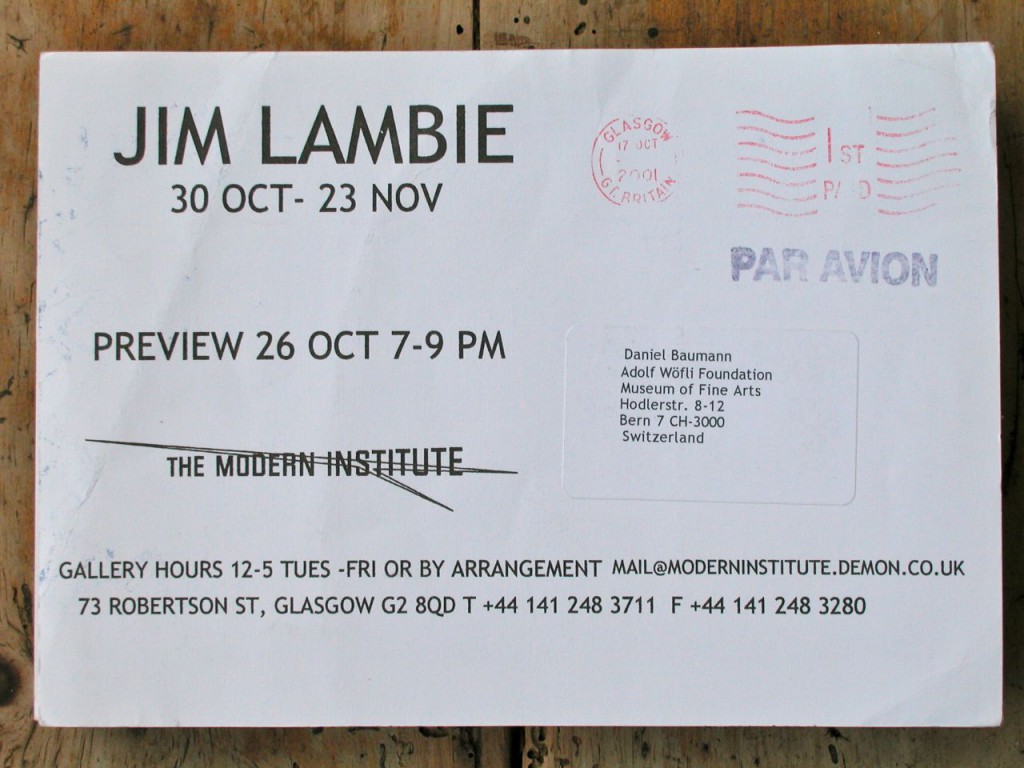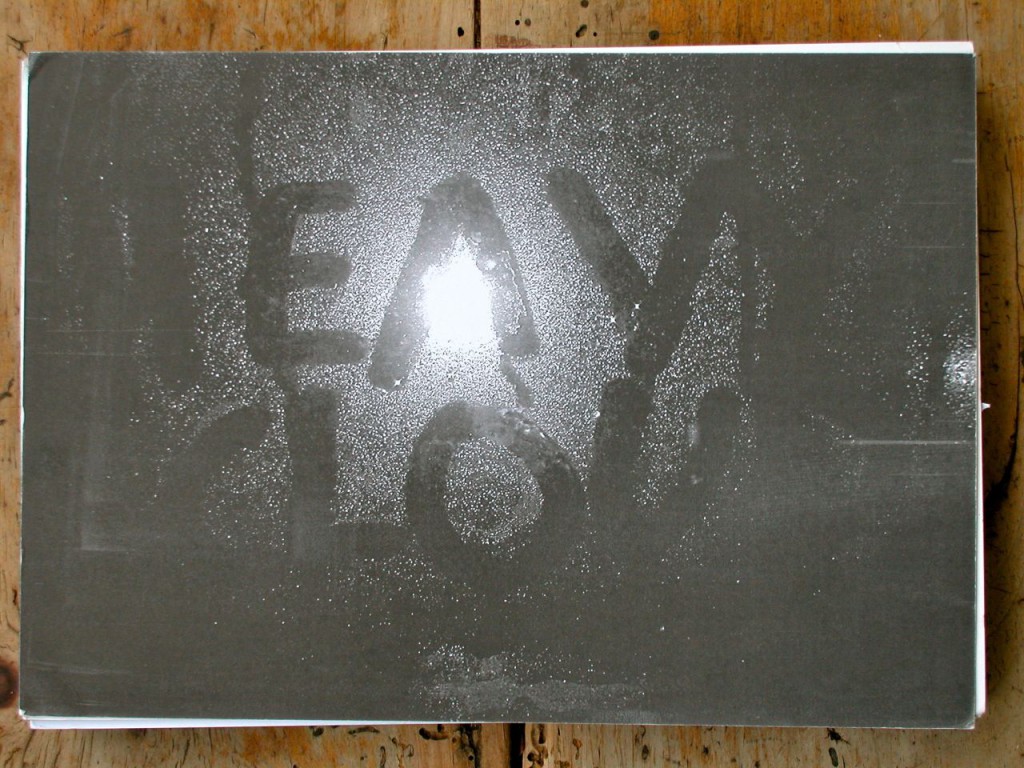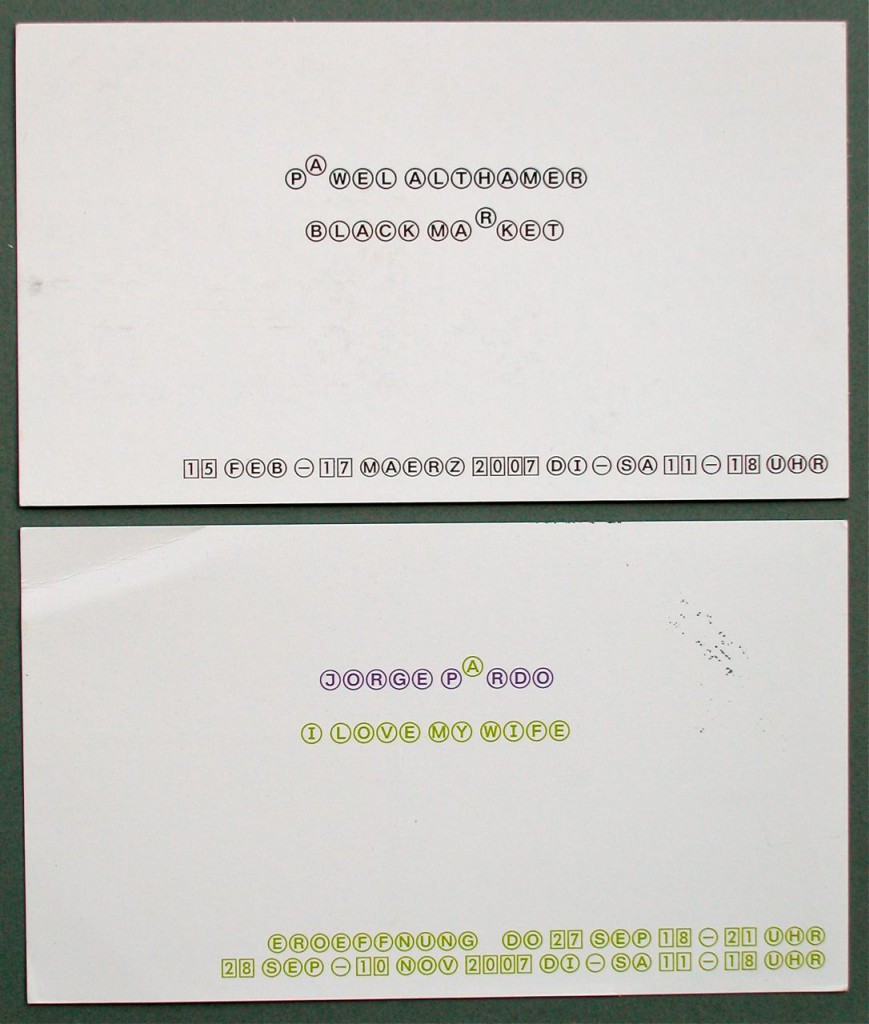























The Modern Institute/Toby Webster Ltd was founded by former Tramway director Charles Esche, writer and curator Will Bradley and Toby Webster in 1997 (Esche left in 1999, Bradley in 2001). In 2006, Andrew Hamilton became Webster’s partner. As Time Out puts it: “A perfect example of Glasgow’s internationally renowned contribution to contemporary art, The Modern Institute was once described by Art Review magazine as ‘a model for galleries around the world’.” The flyers were originally done on Riso in an old paper store in Glasgow called Nashes, hand fed into the machine. Until today, they keep their special appeal for their low quality, and their choices of colors, forms and fonts. They always reminded me of flyers for some obscure bands and concerts. More on the gallery’s history here. Daniel Baumann
Jorge Pardo, design for Gallery neugerriemschneider, Berlin






In 1994, Jorge Pardo (b. 1963, Havana, Cuba) designed the invitation cards for Berlin’s gallery neugerriemschneider. The design is still in use today.
Jorge Pardo is the key art/architecture cross-over artist of the current generation. Architectural elements such as walls, seating, lighting and circulation solutions are combined with ‘art’ elements such as murals, coloured glass and sculpture to create highly livable, elegant spaces. He combines modernist aesthetics and ‘form-follows-function’ dogma with his highly sensitive attention to colour, materials and texture to create his signature streamlined sculptures and built environments.
Havana-born, California-based Pardo is often called upon to ‘heal’ the uncomfortable spaces created by neglect all around us. Pardo looks at the unlivable spaces produced primarily by automobile-culture and consumer-culture, and creates unity and harmony through subtle architectural solutions. For example, he was invited to offer an aesthetic and utilitarian renovation of lobby, bookstore, and frst-floor gallery at New York’s Dia Centre.There, Pardo created an ebullient design for the 9,000-square-foot lobby and first-floor space, reconsidering the audience’s experience by smoothing circulation and enhancing visitor amenities. He infused the ground floor with natural and refracted light by means of a ceramic tiles in an exhilarating combination of sky blues, mustard yellows and lime greens. Pardo’s architectural work includes a pier for Sculpture Project Munster in 1997 (now permanent) as well as other commissions, including a cafe for the Leipzig Messe in Germany in 1996, and the renovation of the Fabric Workshop and Museum in Philadelphia. Recipient of the Smithsonian American Art Museum Lucelia Award, Pardo’s work has been internationally acclaimed in over 100 exhibitions and is featured in many museums’ collections, including the Museum of Modern Art (New York), Tate (London), the Museum of Contemporary Art (Los Angeles), and the Boijmans van Beuningen Museum (Rotterdam).In the interview, Lane Relyea discusses Pardo’s life and motivations, his move from Cuba to Chicago when he was a child, his desire to emancipate himself from the suburban emigre’ community, his school days at the Los Angeles Art Center, and his break in the art world. Christina Vegh’s survey examines the evolution of Pardo’s work from the early, minimal sculptural pieces through more space-concerned, less object-related installation, ultimately culminating in large-scale architectural work. Chris Kraus focuses on 4166 Seaview Lane, a house Pardo presented in 1998 in the context of a solo exhibition at the Museum of Contemporary Art in Los Angeles and where he now resides.
 follow
follow